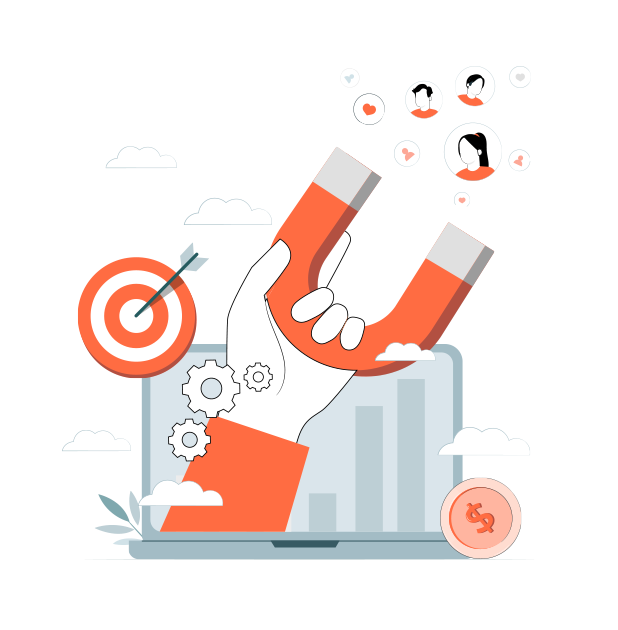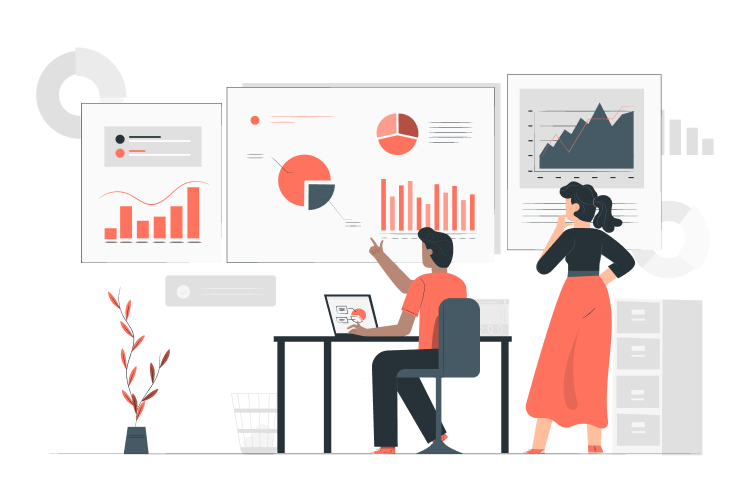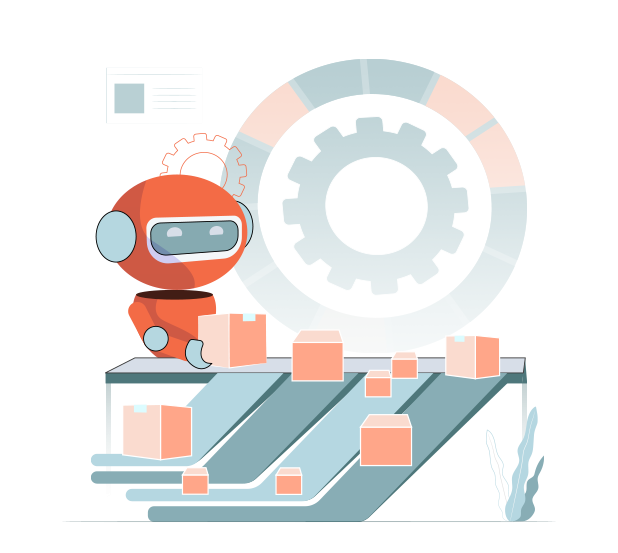Do you know what the most powerful marketing tool is?
Customer loyalty.
Why?
Because existing customers are 60-70% more likely to convert.
If your customers are not coming back to you or running off to your competitors mid-business: clearly YOU’RE doing something wrong.
Companies invest 75 billion dollars in customer retention software for this reason. Make the most of your ROI by investing in the best customer retention software tools.
There are many customer loyalty software, we will show you the best ones among them & clear-as-day reasons why they are the best.
What is customer retention software?
Customer retention is the process of keeping your customers happy and engaged with your product or service. It’s important to keep your customers retained so they continue to use your product or service and remain loyal to your brand.
The tools that ease this process are customer retention software.
There are a few key things you can do to help retain your customers:
- Make sure your product or service is delivering on its promise. If it’s not, customers will be quick to leave.
- Keep your pricing in line with the value you’re providing. If you start to increase prices without adding more value, customers will look for alternatives.
- Make it easy for customers to use your product or service. If it’s complicated or difficult to use, customers will give up and go elsewhere
- Provide outstanding customer support. If customers have problems, make sure they can easily reach out to you and get help
Types of customer retention software
There are different tools to improve customer retention, each of which addresses a specific aspect of retention.
Let’s take a look at them:
Analytics tools: These are used to accurately track customer retention metrics and evaluate performance over time. (eg: Kissmetrics, Google Analytics)
Automation platforms: These connect customer data from various sources to provide a complete overview of customer interactions. (eg: Zapier, Intergromat )
Customer experience platforms: These measure website performances and collect customer feedback through the voice of the customer (VoC) to improve satisfaction. (eg. User Testing, Qualitrics)
Customer support tools: These improve customer service and allow for the evaluation of its impact on customer retention. They help in processes like live chat etc,. (eg. Zendesk, Help Scout)
Messaging platforms: These send personalized emails, SMS, and push notifications to encourage customers to return. (eg. Mailchimp, Omnisend)
CRM Software tools: These manage customer interactions and relationships in one central location. (eg. Hubspot, Omnisend)
Loyalty programs: These incentivize customers to make repeat purchases. (eg. Smile.io, LoyaltyLion)
Personalization tools: These tailor content to individual customers to enhance their overall experience. (eg. Dynamic Yield, Optimizing)
Among these categories, there are some gems that can revitalize SaaS business marketing strategies. Want to know what they are?
Best customer retention software
- Kissmetrics
Kissmetrics is a web analytics and marketing platform that helps businesses track customer behavior and improve customer retention. It allows companies to analyze customer interactions with their website and product, and provide insights into customer behavior.
The platform provides a visual representation of customer journeys, making it easier for businesses to identify trends, measure conversion rates, and optimize customer experiences.
Pros
- Advanced Customer Segmentation: Kissmetrics allows businesses to segment their customer base into smaller groups based on specific criteria, such as behavior, demographics, or purchase history. This makes it easier to target specific customer groups with relevant messages.
- Easy to Use Dashboard: The platform provides an intuitive dashboard that gives businesses a visual representation of customer data and insights. This makes it easier for businesses to quickly identify areas for improvement.
- Integrations with Other Tools: Kissmetrics integrates with a variety of other tools, such as email marketing platforms, e-commerce platforms, and CRMs. This makes it easy to combine customer data from multiple sources and provide a comprehensive view of the customer journey.
Cons
- Steep Learning Curve: The platform provides a lot of data and insights, but it can be overwhelming for users who are not familiar with web analytics.
- High Cost: Kissmetrics can be expensive for small businesses and may not be feasible for businesses with a limited budget.
- Limited Customization: The platform provides a standard set of analytics and insights, but users may not be able to fully customize their reporting to meet their specific needs.
Kissmetrics is an amazing tool for businesses to read the minds of customers. Tackle the challenge of the learning curve and you have yourself an ace up your sleeve.
- Zendesk
Zendesk is a customer service software that helps businesses manage customer interactions through various channels such as email, phone, chat, and social media.
It provides a centralized platform for storing and organizing customer information and helps companies streamline their support processes by automating routine tasks and providing agents with real-time data and insights.
Pros
- Easy to use: Zendesk has a user-friendly interface that is easy for both agents and customers to navigate.
- Customizable: Zendesk offers a wide range of customization options to fit the unique needs of different businesses.
- Multi-channel support: Zendesk allows businesses to manage customer interactions across multiple channels, providing a seamless experience for both customers and agents.
- Integrations: Zendesk integrates with a variety of other business tools, making it easier to manage customer interactions and support processes.
Cons
- Cost: Zendesk can be expensive, especially for small businesses with limited budgets.
- Limited reporting and analytics: While Zendesk provides some reporting and analytics capabilities, they may not be as robust as some businesses need.
- Complex setup: Zendesk can be complex to set up, and may require the help of a professional to ensure it is configured correctly.
- Limited self-service options: Zendesk’s self-service options may be limited for some businesses, and may not provide the level of customization that some businesses need.
Among the client retention software, Zendesk is one of the most popular options for businesses
- Mailchimp
If you’ve ever given a glance at email marketing opportunities, then you should be familiar with Mailchimp.
Mailchimp is an email marketing platform that helps businesses communicate with their customers and prospects through email. It provides a suite of tools for creating and sending newsletters, automated emails, and targeted campaigns.
Mailchimp also provides a range of analytics and reporting capabilities, allowing businesses to track the success of their campaigns and make data-driven decisions.
Pros
- User-friendly: Mailchimp has a user-friendly interface that makes it easy for businesses of all sizes to create and send email campaigns.
- Affordable: Mailchimp offers a free plan and reasonably priced paid plans, making it accessible for businesses with limited budgets.
- Automation capabilities: Mailchimp provides a range of automation features, such as welcome emails and abandoned cart reminders, which can save businesses time and improve their marketing efforts.
- Integrations: Mailchimp integrates with a variety of other business tools, making it easier to manage marketing campaigns and customer data.
Cons
- Limited design options: While Mailchimp provides a range of design templates, some businesses may find the options limited and may need to rely on custom coding for more advanced designs.
- Limited advanced features: Some businesses may find that Mailchimp’s advanced features are limited compared to other marketing platforms.
- Deliverability issues: In some cases, email campaigns sent through Mailchimp may end up in the recipient’s spam folders, which can negatively impact open rates and engagement.
- Limited support: Mailchimp’s free plan provides limited support options, and paid plans may not provide the level of support that some businesses need.
- Hubspot
Hubspot is a comprehensive inbound marketing, sales, and customer service platform. It helps businesses attract, engage, and delight customers through a range of marketing, sales, and customer service tools.
Hubspot provides a centralized platform for managing customer data and interactions, allowing businesses to streamline their processes and provide a seamless customer experience.
Pros
- All-in-one platform: Hubspot provides a range of marketing, sales, and customer service tools, making it a one-stop-shop for businesses looking to improve their inbound marketing efforts.
- User-friendly: Hubspot has a user-friendly interface that makes it easy for businesses of all sizes to use and manage their marketing and sales processes.
- Customizable: Hubspot offers a wide range of customization options to fit the unique needs of different businesses.
- Integrations: Hubspot integrates with a variety of other business tools, making it easier to manage customer interactions and support processes.
Cons
- Cost: Hubspot can be expensive, especially for small businesses with limited budgets.
- Steep learning curve: Hubspot’s comprehensive feature set can be overwhelming for some users, and may require a significant investment of time and resources to learn and implement effectively.
- Limited reporting and analytics: While Hubspot provides some reporting and analytics capabilities, they may not be as robust as some businesses need.
- Dependency on technology: Hubspot’s marketing and sales processes are heavily reliant on technology, which can create challenges for businesses that are not technologically advanced.
- Churn360
Churn360 is an AI-powered customer success software that provides helpful features to measure the engagement of the customers on your SaaS platform. With granular analytics and tracking capabilities of Churn360, you can retain customers, measure their health score and record their customer journey to optimise your product for better conversion.
It gives a visually-rich dashboard to map customer journey starting from onboarding to adoption, renewal and upselling to know the exact growth journey of a buyer.
Pros
Comprehensive customer data insights: Churn360 provides a unified view of customer data from various sources, including CRM systems, product usage data, and customer support tickets. This gives businesses a holistic understanding of their customers and their behavior.
Predictive analytics: Churn360 uses predictive analytics to identify customers who are at risk of churning. This allows businesses to proactively reach out to these customers and help Customers get value so they do not churn.
Automated plays: Churn360 offers a variety of automated workflows that businesses can use to streamline their customer success operations. For example, businesses can create automated playbooks to onboard customers that combine a series of automated and manual tasks to help Customers achieve a quick first time to value.
Cons
No Free Trial: Given that Customer Success platforms have to integrate a lot of data before they can start seeing value, there is no free trial available. But you do get a pre-populated portal that you can use to test out the platform.
Onboarding time: Customer Success platforms, by nature, require customer data to work well. If the customer data is not ready to be integrated, then it might take some time to onboard. Things like unique identifiers need to be identified and configured in the systems that customers use.
Change of behavior: Adapting any software to do your day-to-day job takes some time. Customers need to train their CSM teams to adapt to Churn360 by showing them the value. Once they adopt their day-to-day job will become way easier. But until they adapt, the champion on the customers’ side has to work closely with the dedicated CSM from Churn360 to get the system set up, and conduct sessions showing value to the CSMs, so adoption happens quickly.
6. Qualitrics
Qualtrics is a cloud-based survey and data analysis software that helps businesses gather and analyze customer and employee feedback. It provides a range of tools for creating, distributing, and analyzing surveys, as well as for reporting results and creating visualizations.
Pros
- User-friendly interface: The software is easy to use, even for those with little technical expertise.
- Customization options: Qualtrics offers a wide range of customization options for surveys, allowing businesses to create unique and engaging experiences for their respondents.
- Comprehensive data analysis: The software provides advanced data analysis features, making it possible to generate insights and identify trends in survey data.
Cons
- Cost: Qualtrics can be expensive, especially for smaller businesses or those on a tight budget.
- Learning curve: Although the software is user-friendly, it may take some time to master all its features and functionality.
- Limited integrations: Qualtrics currently has limited integrations with other software, which can make it difficult to transfer data between platforms.
Some customer retention solutions
There are a number of customer retention strategies that SaaS founders can use to keep their customers engaged and reduce churn. These include providing excellent customer support, offering valuable discounts and promotions, and constantly improving the product or service.
Customer support is one of the most important factors in retaining customers. Response time, helpfulness, and professionalism are all key elements of good customer support. Providing a great customer experience will keep customers coming back, even if there are hiccups along the way.
Discounts and promotions can be a great way to show customers that they are valued. Offering a loyalty program or occasional freebie can go a long way in keeping customers engaged.
Finally, it’s important to constantly improve the product or service. Keeping up with the latest trends and making sure the product meets customer needs will help retain customers over the long term.
These customer retention strategies can help SaaS founders reduce churn and increase their bottom line. With the right approach, businesses can build a strong and loyal customer base.
Takeaway
In conclusion, customer retention is a crucial aspect of any business, and utilizing the right software can greatly improve the process.
The top customer retention software options available in the market offer a wide range of features, including personalized communication, customer feedback and insights, data analysis, and much more.
Whether you are looking to improve customer loyalty or increase customer satisfaction, using one of these software solutions can help you achieve your goals and drive your business forward.
Ultimately, the best software for you will depend on your unique needs and business objectives. It is important to carefully evaluate your options and choose the software that best fits your requirements.
If you are looking to make a full-option customer retention tool, NeoITO is just a click away.




